In the early 1960's Ferrari dominated international sports racing. Henry Ford II had a vision to change that by using a V8 engine, an English chassis, and a 40-inch tall body designed in Dearborn. The new car, which arrived in 1964, was dubbed the GT40. The first 2-years of racing did not go as planned with reliability being the primary issue. This was to change in 1966 when Ford with the help of Carroll Shelby came to Le Mans that July. The battle between Ford and Ferrari was to begin in earnest. In 1966 the Ford GT40 Mk II's finished 1-2-3 at the 24 Hours of Le Mans crushing the winning streak held by Ferrari. This was the first win by an American constructor and would not be the last. Now, fifty years later all of the Le Mans winning GT40's and other international sports race winning GT40's were assembled together at Pebble Beach to celebrate the 50th anniversary of that first win. At the end of the 1964 season the third (GT/103) and fourth (GT/104) prototypes were sent to Carroll Shelby's shop in Los Angeles to have his team refine the chassis. After months of trial and error testing at Riverside Raceway the car was deemed ready. At Daytona in January 1965 it was clear that Shelby had made a difference when GT/103 scored a victory with Ken Miles and Lloyd Ruby doing the driving. This car continued to race through the season being driven by other notable drivers such as Bruce McLaren and Phil Hill but did not score another win.
More details...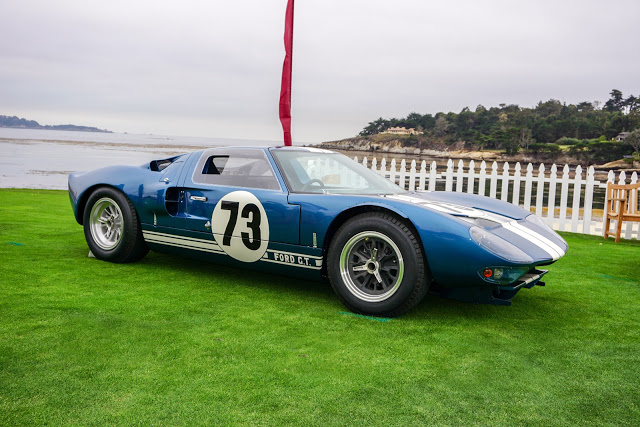
Ford Advanced Vehicles (FAV) was set up in England to oversee and develop the GT40 in Europe. Of the five GT40 roadsters produced by FAV chassis GT/109 was the only one to be raced. It went to Le Mans but like all the GT40's in the 1965 event it failed to finish.
More details...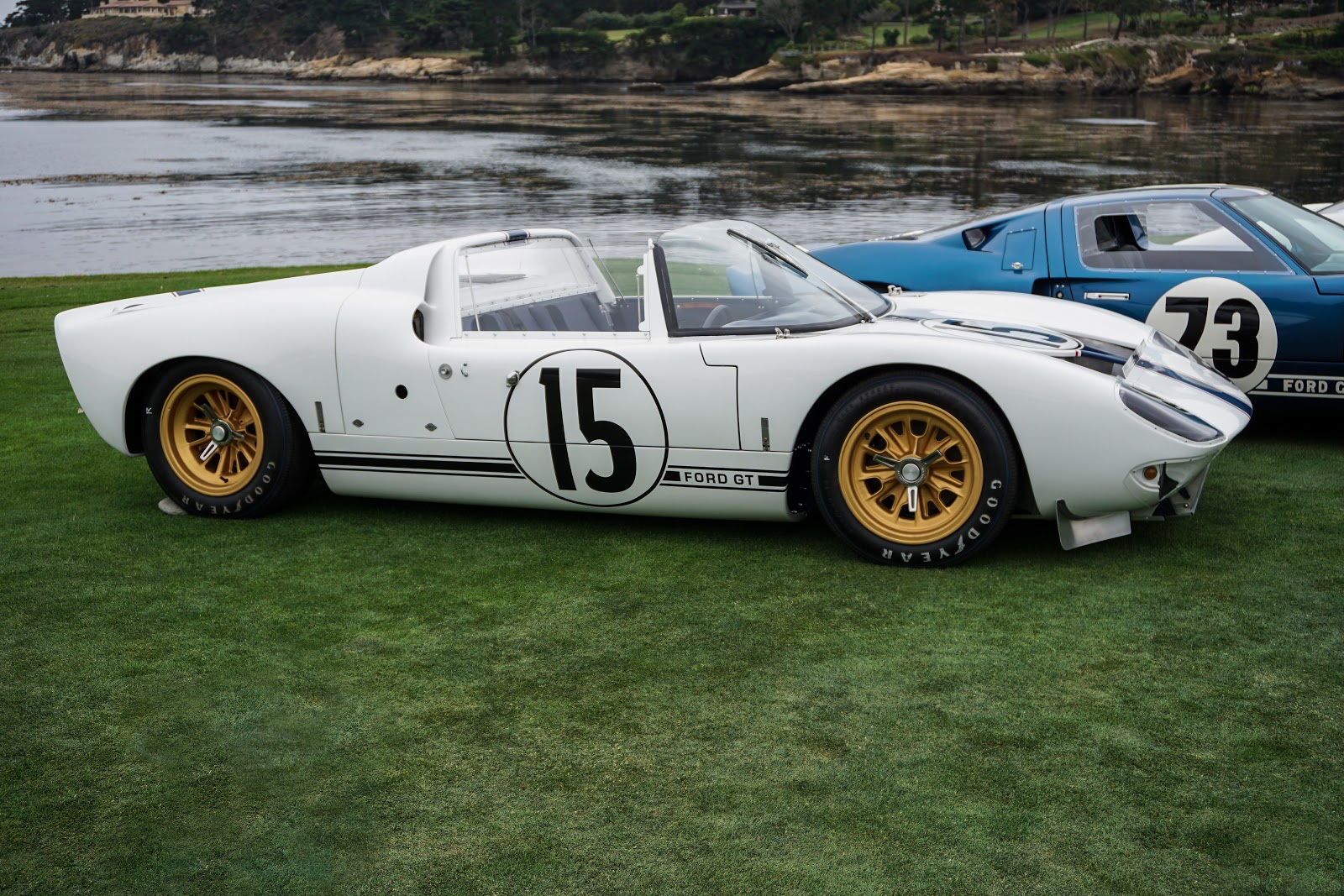
Learning from the previous years Ford decided to use the 427 cu.in block in place of the 289 cu.in units. 1966 saw GT40 Mk II (chassis P/1015) starting its career with a win at the 24 hours of Daytona with co-drivers Ken Miles and Lloyd Ruby.
More details...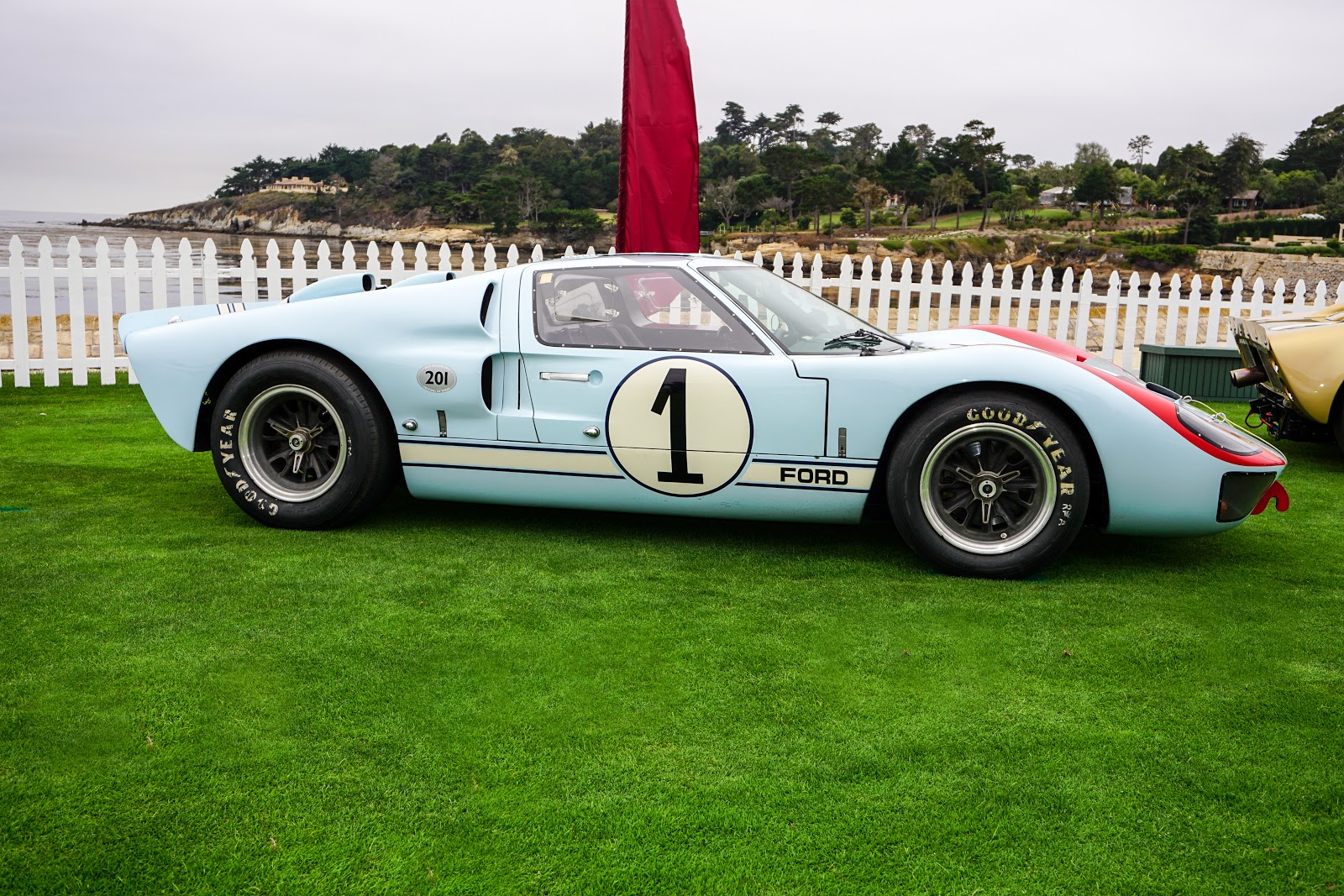
From there it went to France. Being driven By Ken Miles and Denny Hulme it was leading during the closing laps of the famed 24-hour event. A decision was made by Ford to "stage" a photo finish. Miles slowed the leading GT40 so that the second place GT40 (chassis P/1046) co-driven by Bruce McLaren and Chris Amon could run alongside. When they crossed the finish line in formation the stewards made a controversial decision when they gave the win to the car driven by McLaren/Amon because they had started further down the grid and therefore had driven further than the Miles/Hulme car.
More details...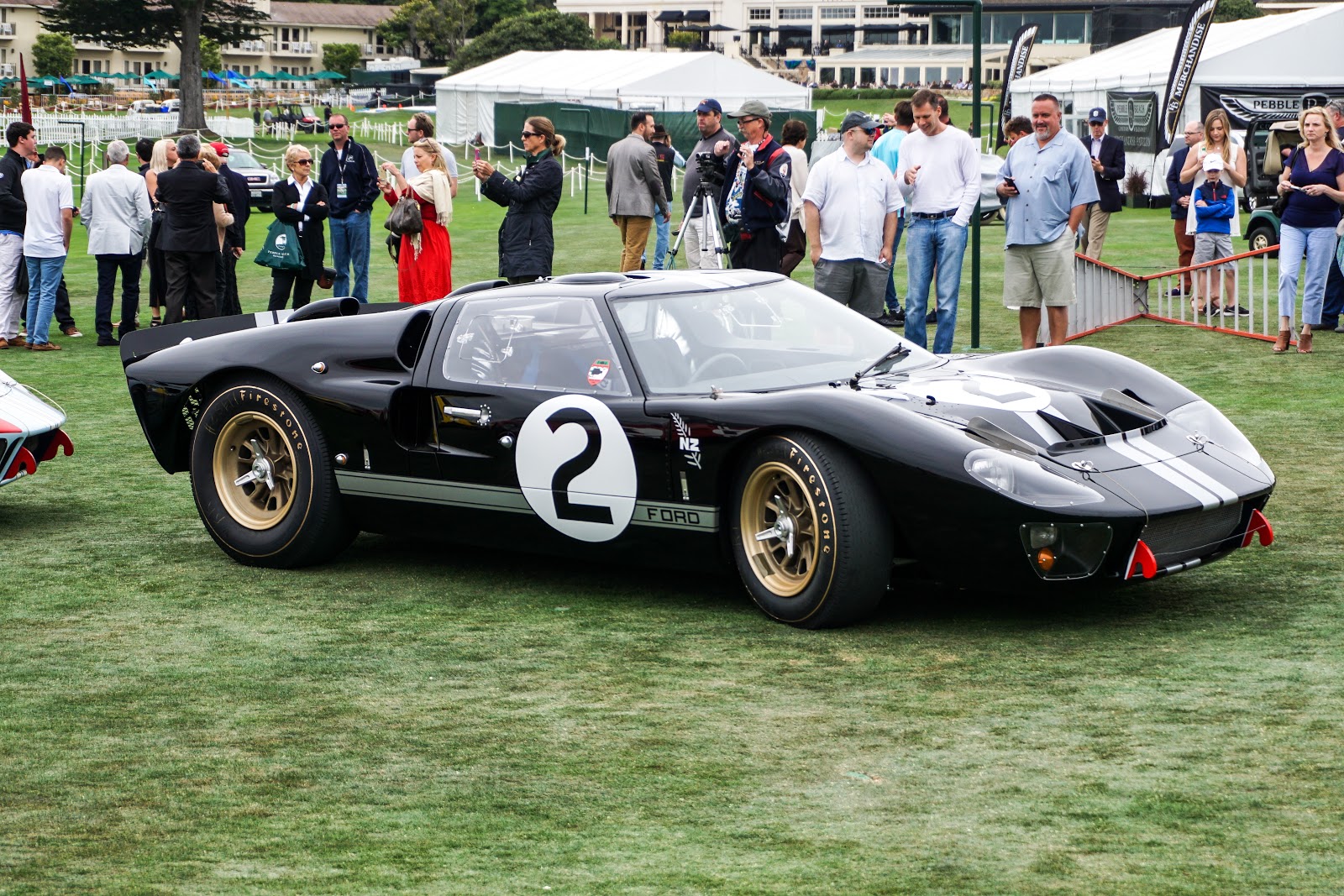
The third car in that historic finish was driven by Ronnie Bucknum and Dick Hutchinson and was chassis P/1016.
More details...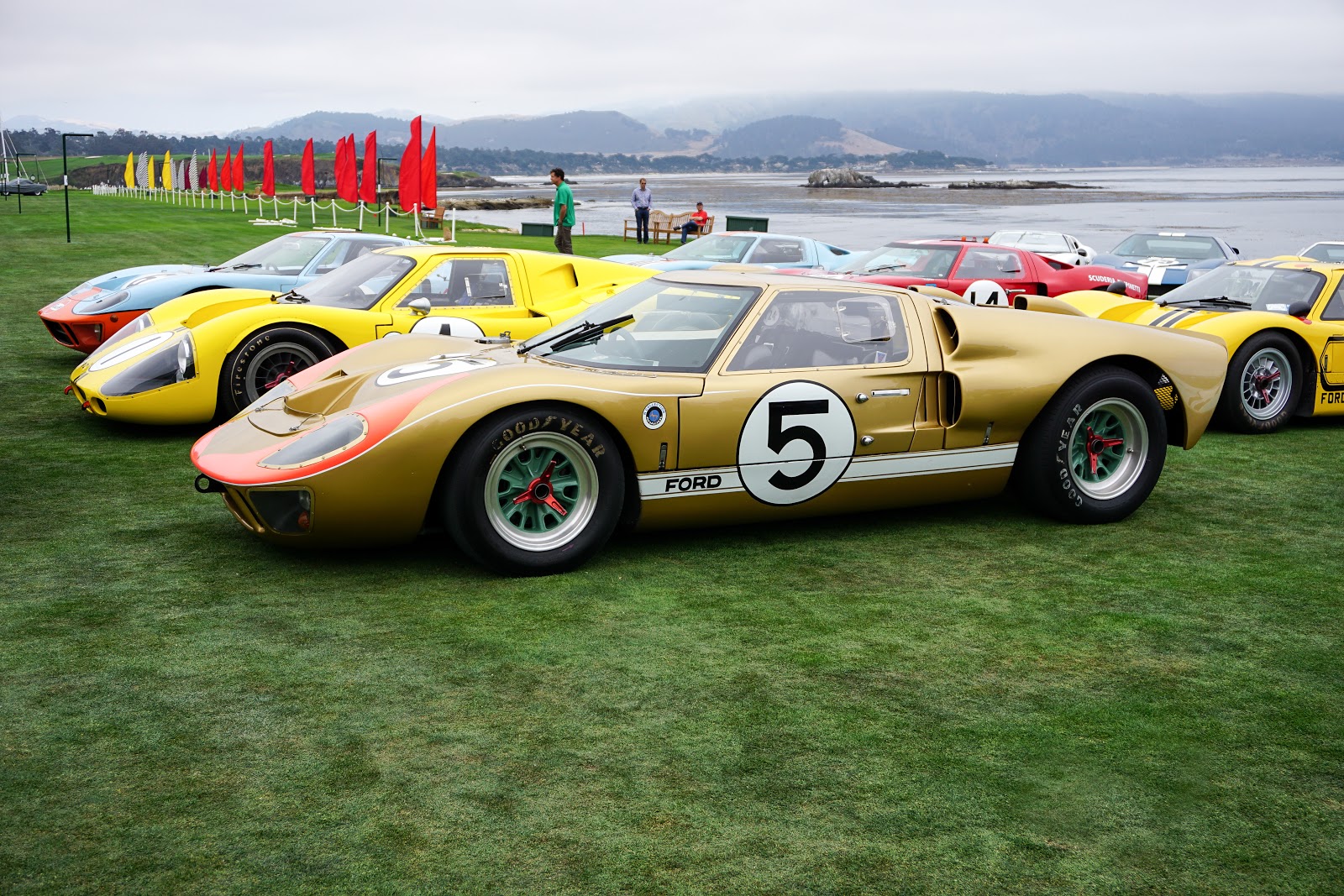
In 1967 Ford started campaigning the completely redesigned GT40 Mk IV. These cars differed from the original Mk I and Mk II GT40's by having longer front facia, lowered Can-Am like tail sections, revised roof lines, and a full NASCAR-style roll cage. The Mk IV debuted at Sebring and chassis J-4 led from start to finish while being co-driven by Bruce McLaren and Mario Andretti. The car was not taken over to Le Mans but it's sister Mk IV (chassis J-5) was and again it bested the best that Ferrari could bring while co-driven by Dan Gurney and A.J. Foyt.
More details...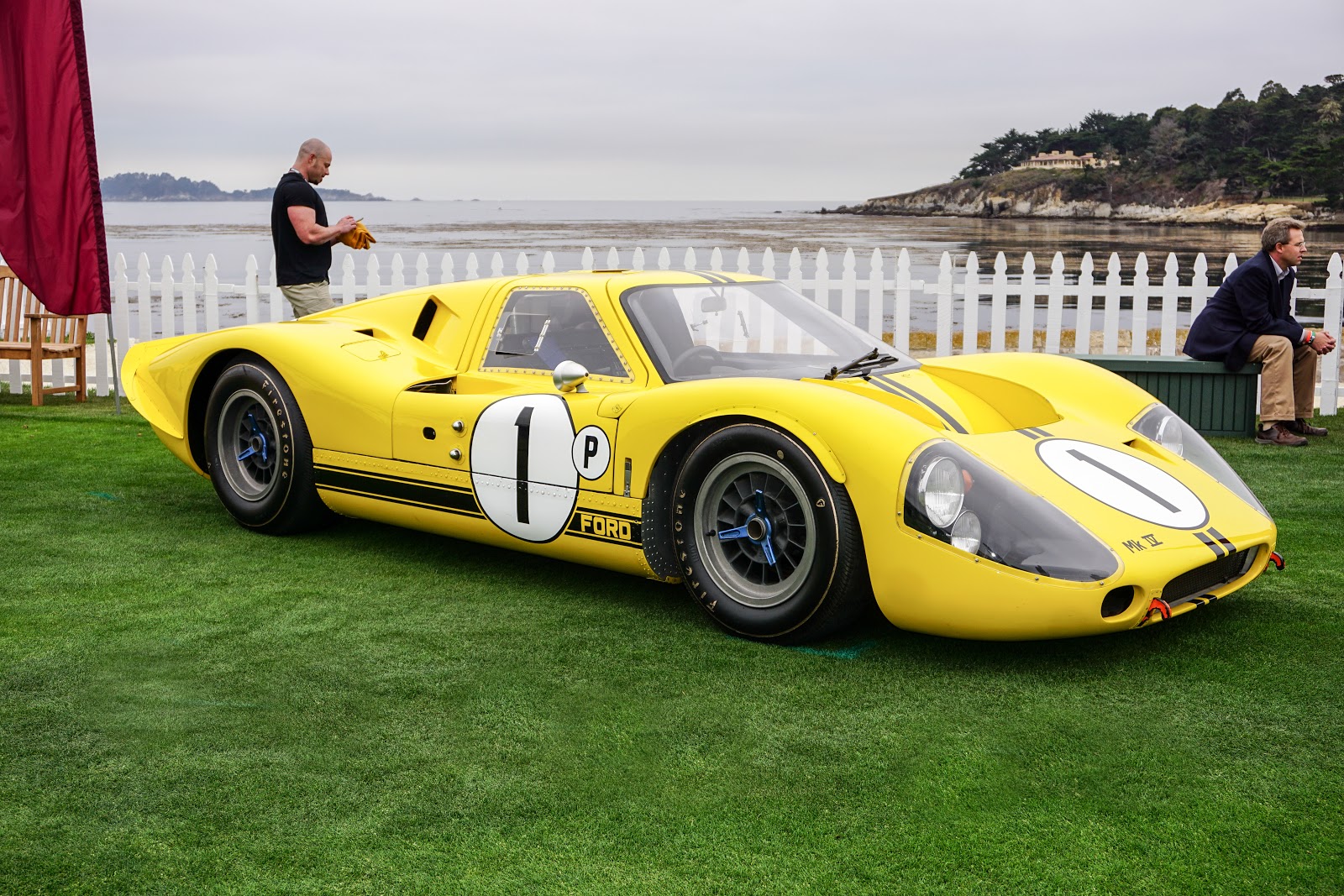
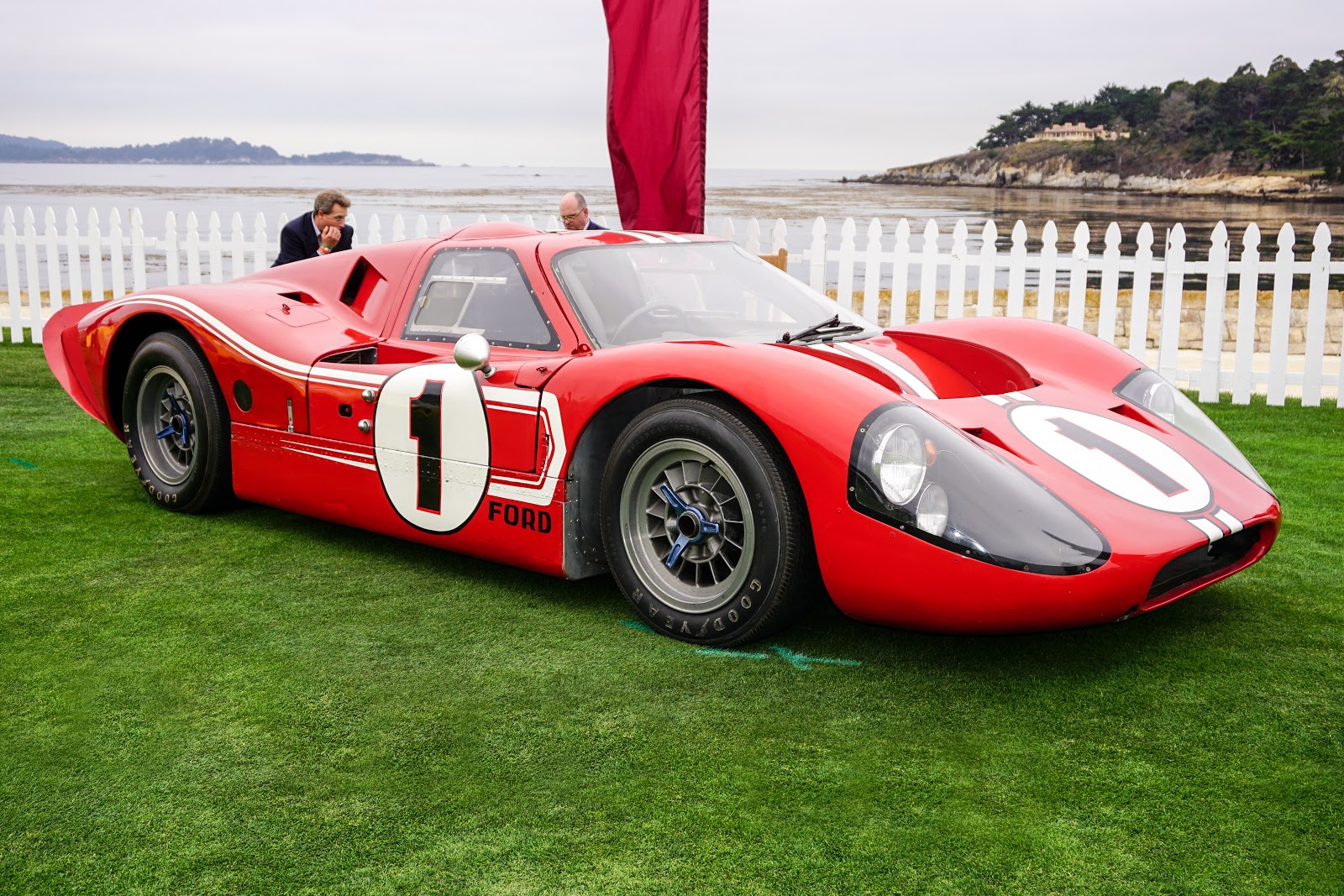
Although Ford could not claim another 1-2-3 at Le Mans during 1967 another Mk IV (chassis J-6) did finish in 4th place being co-driven by Bruce McLaren and Mark Donohue. Following the 1967 season Ford decided to retire from international sports racing to focus their efforts elsewhere. Ford sold FAV to John Wyer and J.W. Automotive Engineering who had managed the racing effort in Europe and along with Alan Mann Racing would continue the fight.
More details...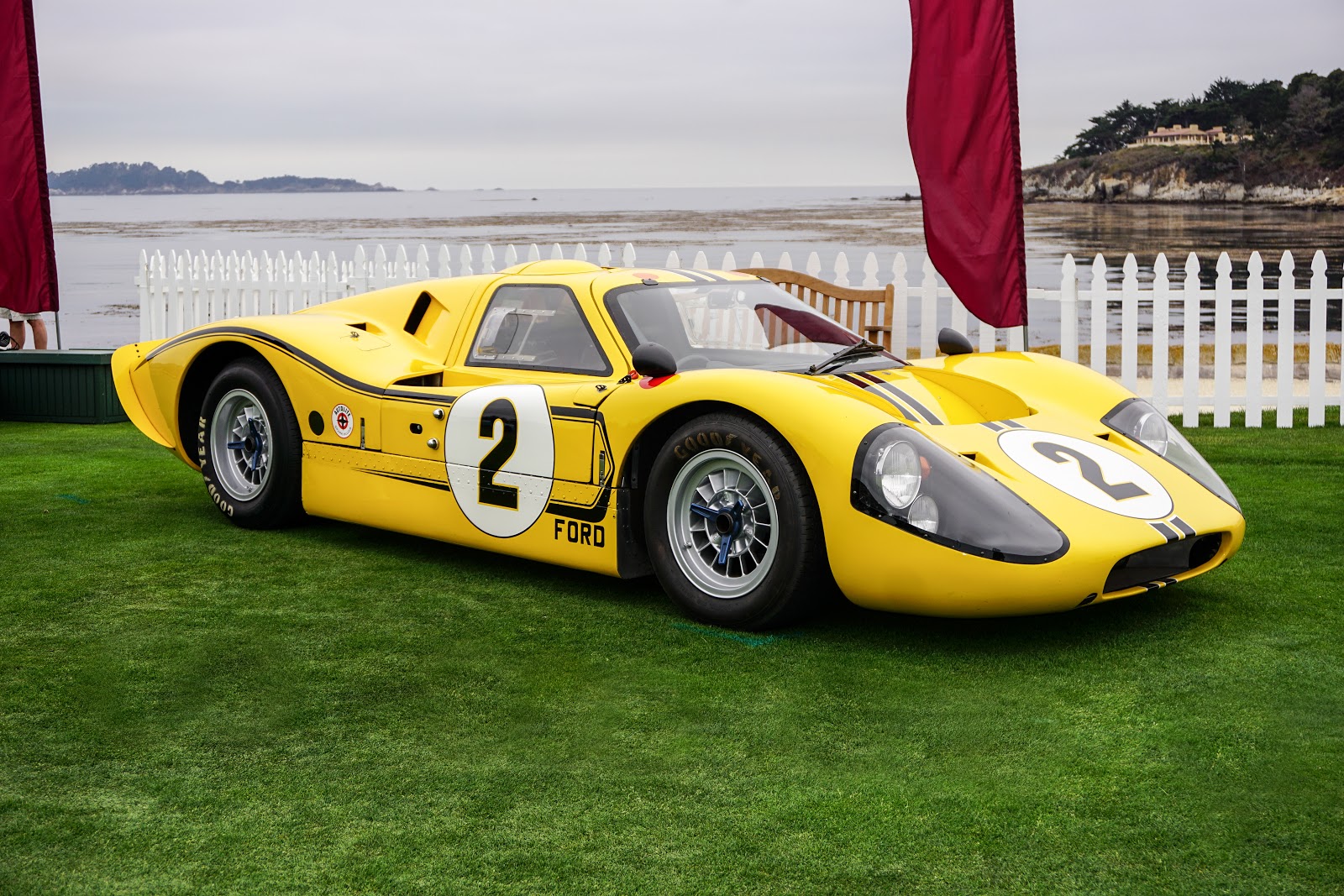
J.W.Automotive began building two lightweight GT40's with carbon fiber reinforced bodies similar to the Mk. I. Chassis P/1075 was taken to Le Mans in 1968 being co-driven by Pedro Rodriquez and Lucien Bianchi scoring another victory. But, this was not the end. Driven in 1969 by Jacky Ickx and Jackie Oliver they did it again. This is the only GT40 chassis to win Le Mans two years in a row.
More details...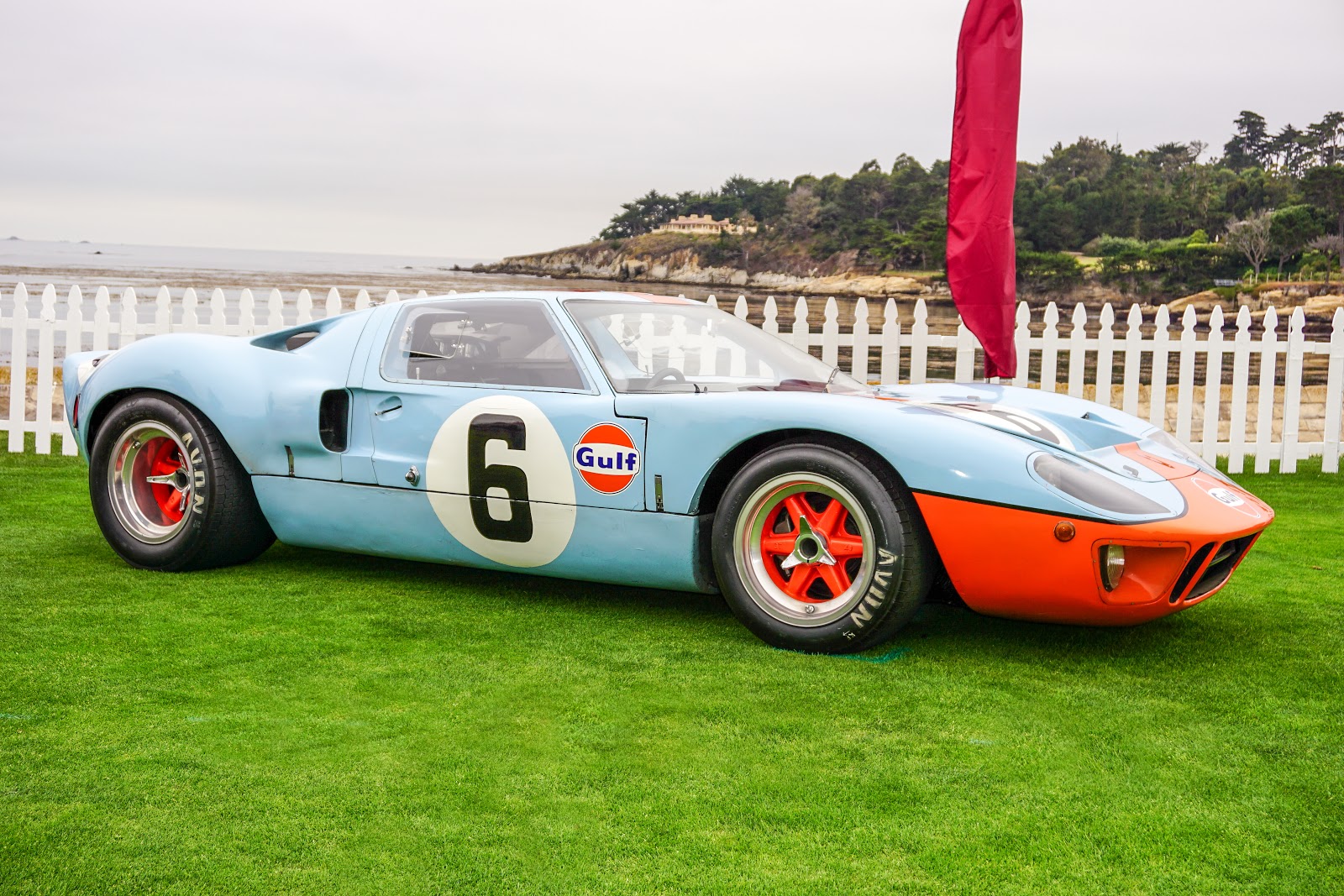
Not all the GT40's present were Le Mans winners. Chassis P/1031 was raced at Daytona, Sebring, and Le Mans without success. This was the chassis that Dan Gurney pushed across the finish line in 1966 at Sebring. For some reason after the 1967 Le Mans race and before Reims while being upgraded to Mk IIB status it was re-numbered as chassis P/1047. Under its new chassis number it was co-driven by Jo Schlesser and Guy Ligier to a 1st place finish at the 12-Hours of Reims. It was retired after the 1967 season.
More details...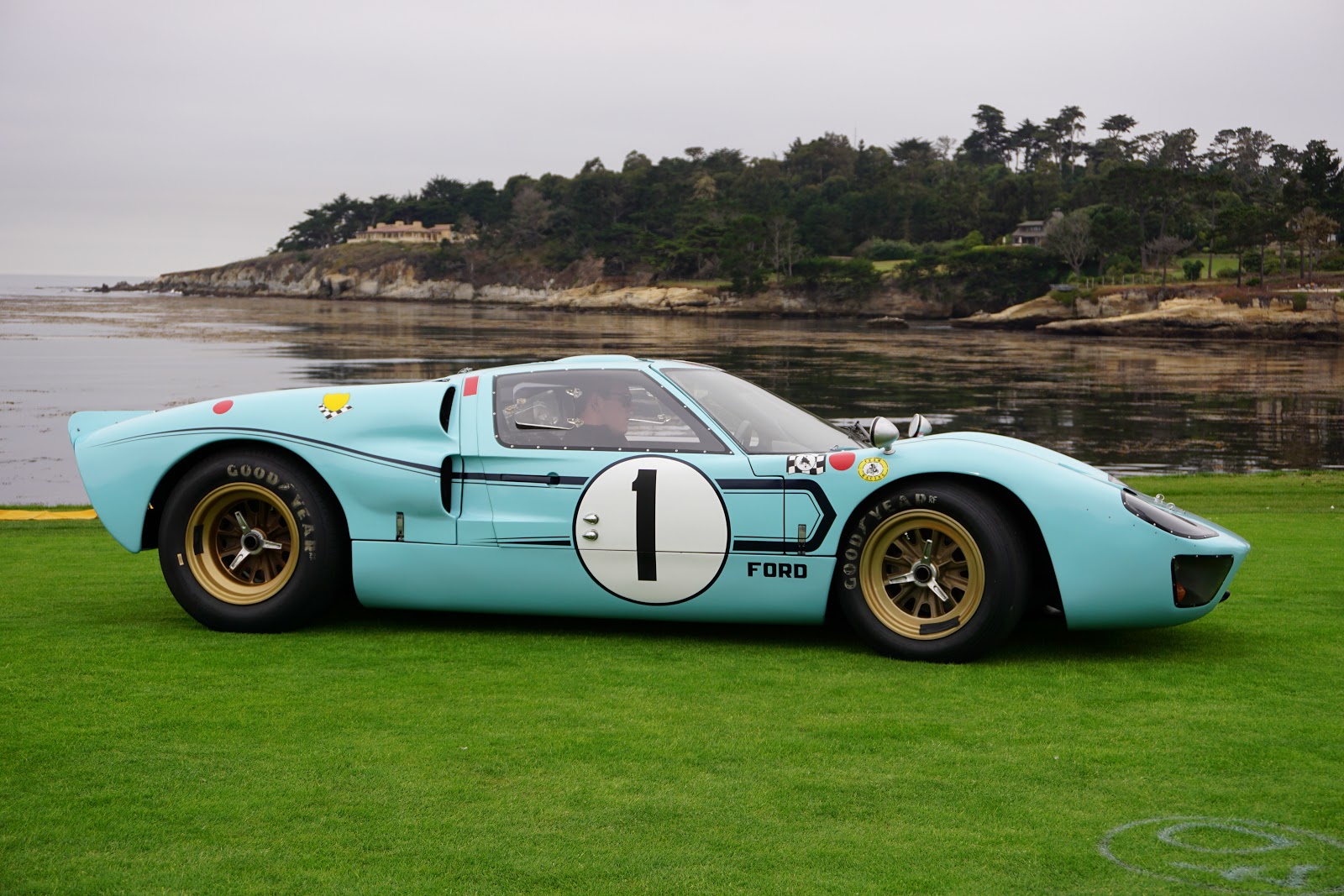
In 1967 a Mirage Coupe (chassis M1/10003) was driven to victory in the Spa 1000 km race by Jacky Ickx and Dick Thompson. In 1968 due to FIA rules changes it was converted by J.W. Automotive into a Group 4 GT40 and given chassis number P/1074. It was one of the three lightweight GT40's built for the J.W.A./Gulf Team.
More details...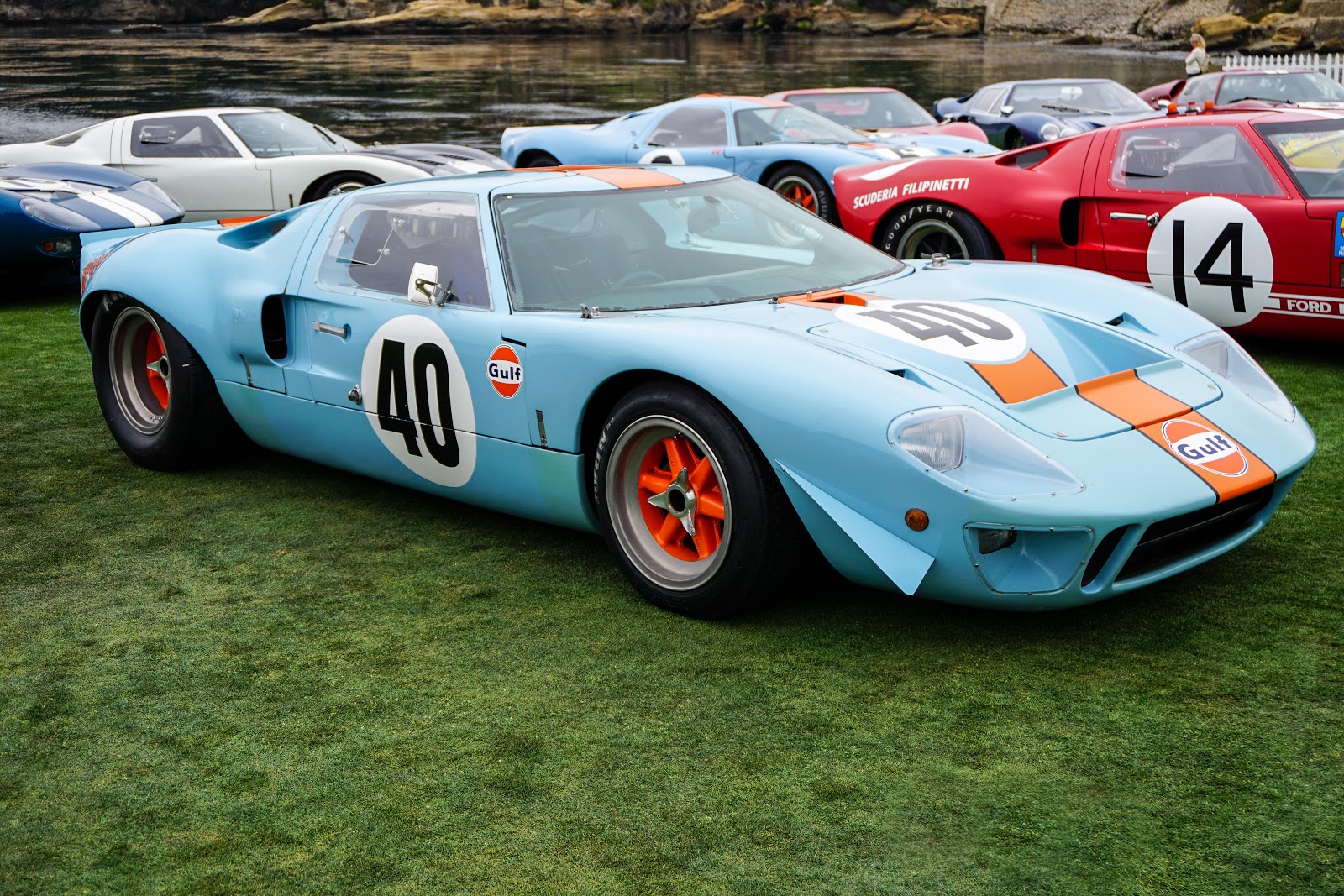
The most successful GT40 (chassis P AM2) was prepared by Alan Mann Racing for the 1966 season. Although it remained winless that season once converted into Group 4 configuration it competed all over Europe recording as multitude of wins and is still competing successfully in historic motoring events.
More details...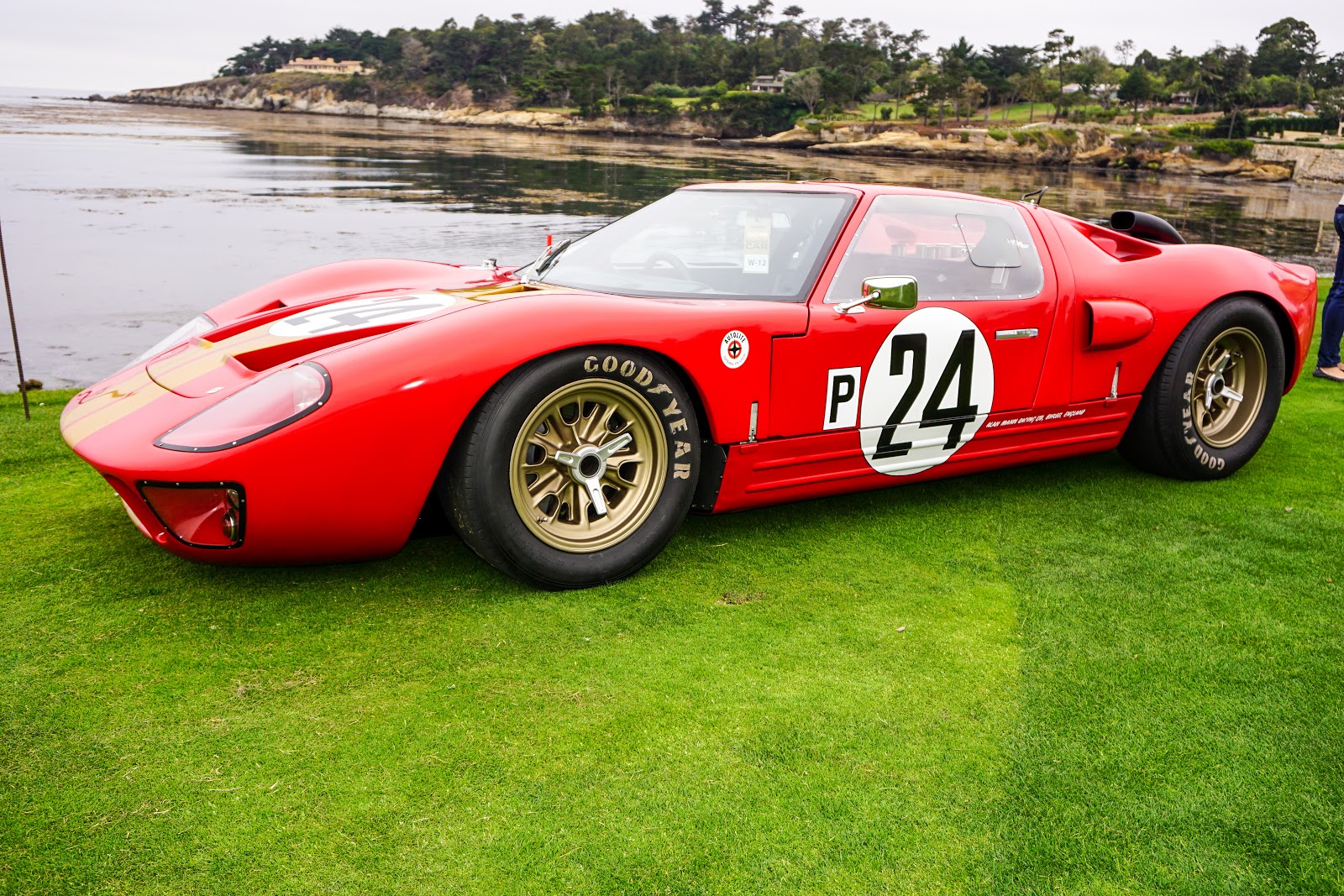
Two other cars were present at Pebble Beach that have no racing heritage but their historical significance allowed their inclusion. The first is the "tribute" to the very first GT prototype. The original was built by British specialists Abbey Panels and Harold Radford. After some development work by Ford in Dearborn the chassis (GT/101) was shown at the 1964 New York Auto Show and then shipped along with the second prototype to Le Mans for the trials. Both car were crashed there during the trials. GT/101 was then scrapped by Ford and development work on the Mk I was begun.
More details...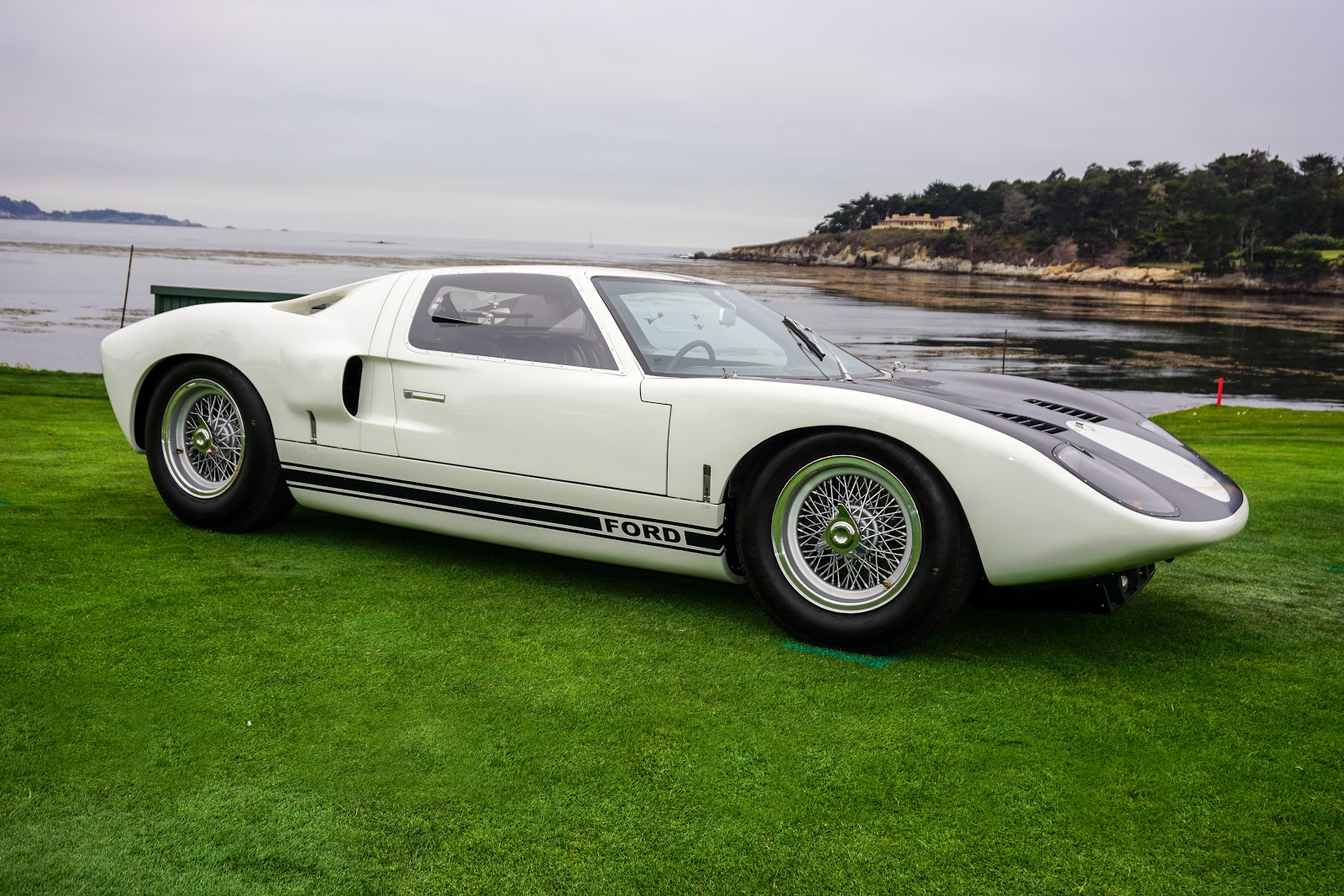
The second car is the prototype for the road-going GT40 Mk III. GT40 (chassis M3/1001) was the first of the 31 period road-going GT40's built.
More details...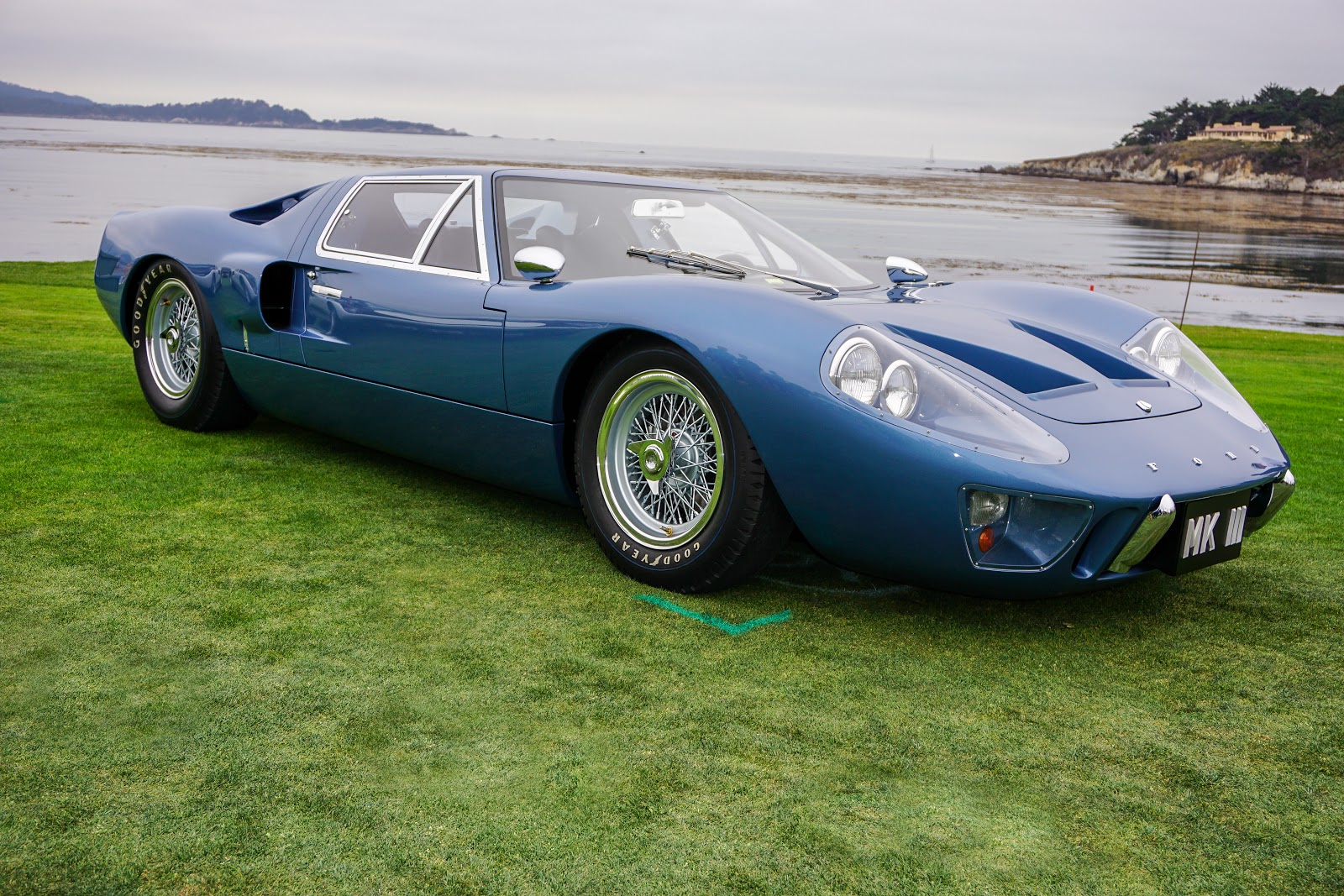
So, after fifty years, all of the Le Mans winning GT40's and other international sports race winning GT40's assembled together to celebrate the 50th anniversary of that first win, represented the 2016 Pebble Beach Concours d'Elegance in its full 18th fairway mid-summer motor culture splendor.